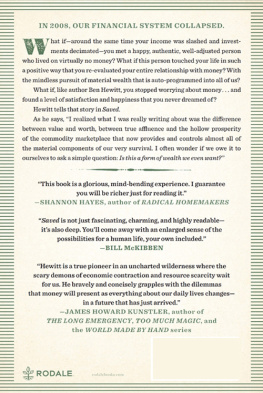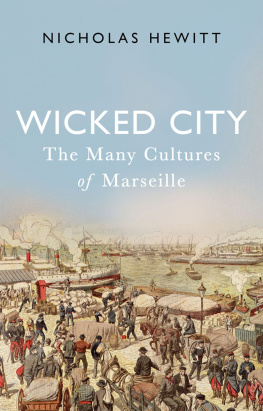B IBLIOGRAPHY
Mama Said There Would Be Days Like This by Val Wilmer
Gentleman by Bernard Roetzel
The Hip by Roy Carr, Brian Case and Fred Dellar
Reggae the Rough Guide by Steve Barrow and Peter Dalton
The In Crowd by Mike Ritson and Stuart Russell
Soho in the Fifties by Daniel Farson
Jazz Man: The amazing story of Ronnie Scott by John Fordham
London Live by Tony Bacon
The Skinhead Bible by George Marshall
Folk Devils and Moral Panics by Stanley Cohen
Tongs Ya Bass by R.G. MacCallum
Windrush by Mike and Trevor Phillips
The Sharper Word: A Mod Anthology by Paolo Hewitt
Soulsville USA by Rob Bowman
Sweet Soul Music by Peter Guralnick
Alexis Korner by Harry Shapiro
The Nick Tosches Reader by Nick Tosches
THE SOUL STYLISTS
SIX DECADES OF MODERNISM
FROM MODS TO CASUALS
Paolo Hewitt
CONCEPT & INTRODUCTION BY
Paul Weller
This eBook is copyright material and must not be copied, reproduced, transferred, distributed, leased, licenced or publicly performed or used in any way except as specifically permitted in writing by the publishers, as allowed under the terms and conditions under which it was purchased or as strictly permitted by applicable copyright law. Any unauthorised distribution or use of this text may be a direct infringement of the authors and publishers rights and those responsible may be liable in law accordingly.
Epub ISBN: 9781780570235
Version 1.0
www.mainstreampublishing.com
Reprinted, 2008
Copyright Paulo Hewitt, 2000
All rights reserved
The moral right of the author has been asserted
First published in Great Britain in 2000 by
MAINSTREAM PUBLISHING COMPANY (EDINBURGH) LTD
7 Albany Street
Edinburgh EH1 3UG
ISBN 9781840185966
Reprinted 2001, 2003, 2004, 2006
No part of this book may be reproduced or transmitted in any form or by any means without written permission from the publisher, except by a reviewer who wishes to quote brief passages in connection with a review written for insertion in a magazine, newspaper or broadcast
A catalogue record for this book is available from the British Library
Dedicated to the greatness of black music, black culture and the black race who have given so much to inspire us.
P AUL W ELLER
Dedicated to all the Woking Suedeheads, whose style and attitude filled my mind with a million possibilities.
P AOLO H EWITT
There are so many people to thank for their part in this books birth, but I particularly want to single out Val Wilmer and Kevin Johansen, whose generosity and help have been invaluable. I also want to thank Debbie Hicks for transcribing the tapes with her usual professionalism and brilliance. Many thanks.
P.H.
E PILOGUE
ONE SUMMERS DAY IN 1989 I was out shopping for Wallabees. Id been told there was a shop down Kings Road that sold them. Evidently, half of London had also heard months before me. The queue stretched down the road and inside the shop was a shoe frenzy a whole new generation of Modernists were getting theirs. You could see there was a new look emerging.
I left the shop and further down the road a kid on a day-glo (Acid House) style Vespa went by. Around that time Id shop a lot in Duffer of St Georges. Just up from it was Black Market Records proper packed on a Saturday morning with kids buying the latest American imports, the new beats spilling out of the speakers and onto DArblay Street. And I felt a kind of reassurance that the beat truly does go on. The clothes change, the drugs too, and the music moves on but the attitude remains unchanged. Which is why we leave this book open ended.
Paul Weller
The secret is still locked up.
Robert Hall
FOREWORD
B Y PAUL WELLER
FLAKS WAS A PROPER BOUTIQUE, the very first in Woking. It had a blacked-out front window save for a centre circle of clear glass which gave the effect of peering into Aladdins cave.
Id been in there a couple of times just to gaze in wonder at the explosion of colours and styles that the late 60s had to offer a clothes and music-obsessed twelve-year-old. At that time, all I craved was a tie-dyed grandpa vest and crushed-velvet flares.
But 69 turned into 70 and in a small suburban town things slowly, but very noticeably, changed. On a day that I will never forget, I saw a kid I knew from school wearing a pair of jeans which were the most fantastic shade of blue Id ever seen and these I gradually learnt were Levis. (I was still in Tesco Bombers.) More and more, I started noticing a lot more kids at school with these blue jeans, many of them now added a red and white gingham button-down shirt. It was a look I had never seen before. It caught my imagination. And never let it go.
The more I noticed the new shift in everything the more intrigued I became. Id saved up the money needed for my first petrol blue and red-checked short-sleeved Brutus shirt, eventually adding the Levis which I got from the local Co-op, priced 50 shillings (2.50). These were the jeans that were shrunk to fit by sitting in a cold bath. Id just missed out on blue shiny wind cheaters with red, white and blue cotton collar and cuffs, which mates called monkey jackets. But I did catch: DMs, loafers, plain or with tassels or even more beautiful tongue and tassel, Royals brogues or smooths, Levi Sta-prest trousers in black, pure white, off white, dark blue, petrol blue, ice blue, bottle green, light green, Harrington jackets in all shades, Crombie coats, Prince of Wales checked pants.
And so it went the most fantastic clothes I had ever seen. A lot of the time youd see the older brothers, sixteen-plus, who to us peanuts were real faces, off out for a night in a Tonik suit jacket, red Fred Perry, off white Sta-prest or faded Levis, red socks and Oxblood smooths or black Royals. For me, that look was just incredible. Its an image that always comes back to me as the true mark of style. It was so exact, so precise, so neat, streamlined, clean, hard and totally expressive. Like all great fashions it came from the grass roots upwards, street fashions made for the kids by the kids involved. In lots of ways, it is the very heartbeat of this book.
The Soul Stylists is a testament to a hidden post-war working-class culture, devised and made up as it went along, constantly changing and turning into something new and fresh. It was made by English working-class kids and was never swayed or influenced by the big fashion houses or the faceless money men. Rather, it remained totally autonomous and brilliantly creative.
It was also silently rebellious in lots of ways and outside of politics or mainstream culture. The look, attitude, music, the lifestyle was largely undetected to society until the media latched on. And then it was only to highlight as usual the negative sides (violence, drugs, etc.). But its the positive, upward sides that are enduring and will continue to be for they cannot kill off what they cant control.





















